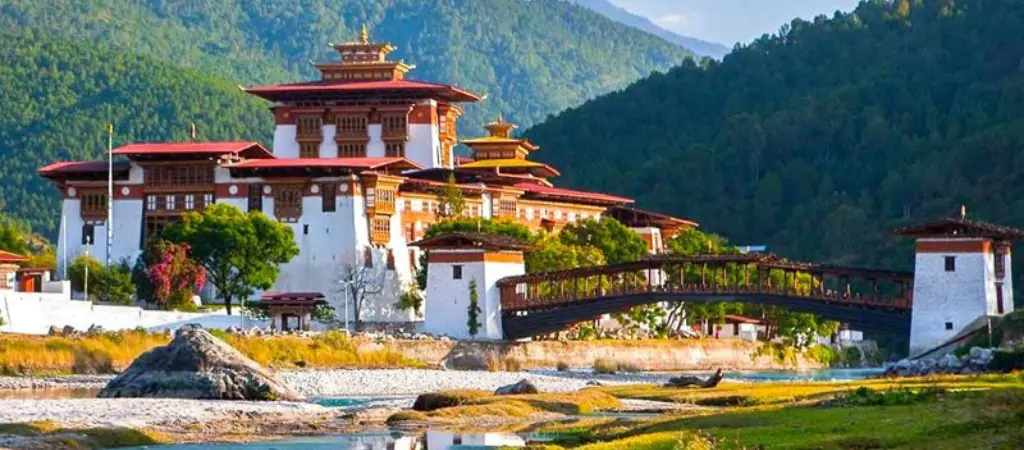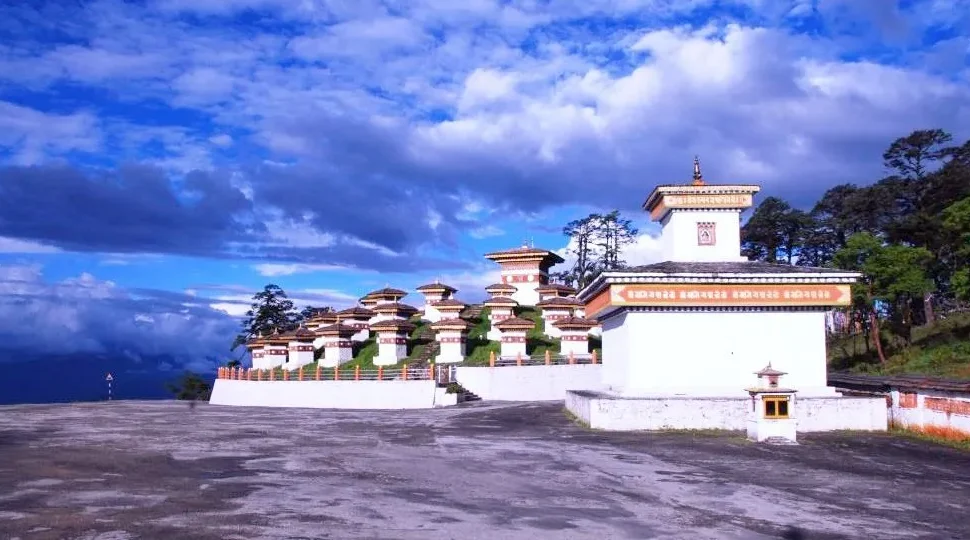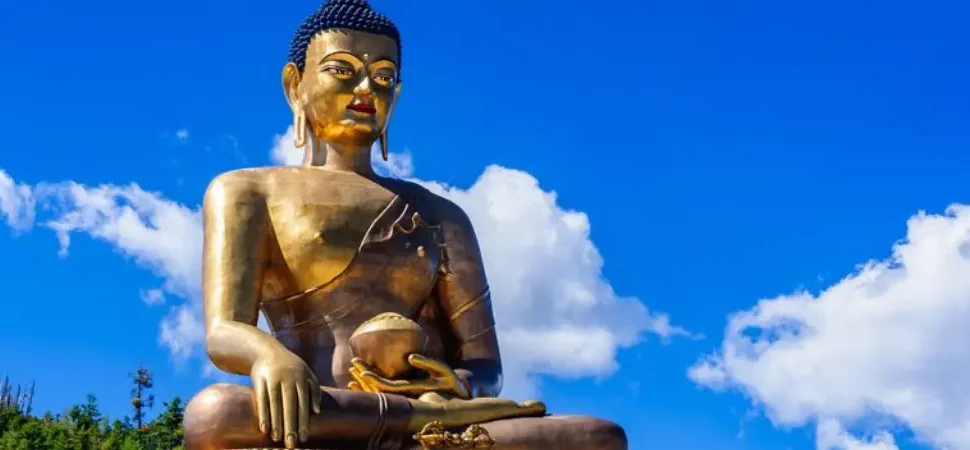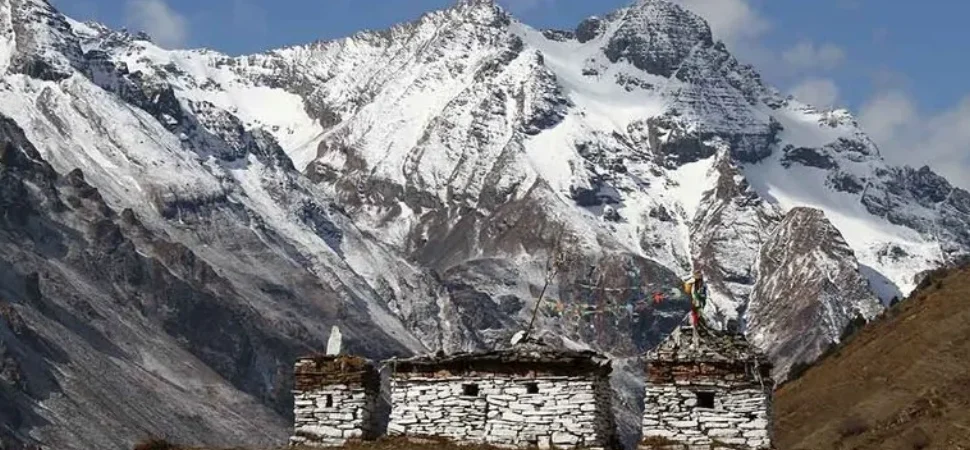Bhutan is a piece of heaven on earth and is a truly magical place for travelers around the world. It is a truly Buddhist kingdom situated in the eastern mountainous region between India and China. The country has a diverse topography of high mountains, lush subtropical plains, and snow-capped peaks tucked in its unspoiled culture.
Bhutan in November is a great time to explore this isolated country packed with the scenery of the Himalayan landscape, primeval forest, and traditional villages and dzongs. Bhutan is the land where culture and traditions have remained intact.
Till the mid of 19th century, Bhutan was not accessible from the rest of the world due to the dense forests in the South and high frozen passes in the North. However with planned economic development in the 1960s, today Bhutan is accessible through both road and air and has made its step towards modernization and development.
Bhutan is one of the safest countries to travel in the world which has accepted modernity on its own terms. It is a country where environmental protection and cultural preservation go hand in hand. Although being an expensive destination, the country has much more to offer for its visitors. It is one of the only places where myths and legends are written as history and children in school formally learn about the manifestation of great Buddhist teachers and their incarnation.
It is the only Buddhist country where Buddhism is not just a religion but the way of life of its people. Most of the dzongs here were built in the 17th century as fortresses to ward off invading Tibetan armies which have now evolved as a cultural symbol. This is the Land of Thunder Dragon led by the King of Bhutan His Royal Highness Jigme Khesar Namgyel Wangchuck whose father abdicated the throne in his favor.
Bhutan is not just a spiritual land or a religious center. It also has many scenic landscapes that are Instagrammable and picture-worthy. Hiking, trekking in forests and Himalayas and bird watching through a chain of national parks is another part of the Bhutan Tour. The Bhutanese festivals and celebrations also add colors to the Bhutanese culture and traditions. Bhutan’s vivid blue sky and visibility of stars at night are perhaps unmatched in Asia.
Weather and Climate in Bhutan during November
The weather of Bhutan in November is pleasant and is considered a great time to visit Bhutan. Although it’s the time when winter is approaching slowly, the weather is relatively warm. The average temperature of Bhutan in November is around 7°C to 14°C. With monsoon rains absolutely gone, it is advantageous to Trek in this month of the year seeing the mystic views of the mountains. Most of the days are clear, sunny and bright for an almost entire month. Traveling to ancient monasteries with elevations ranging from 2500m to 3500m is also ideal during November. However, as the winter is on its way the temperature drops significantly.
Weather and Climate at Western Bhutan
Maximum temperature: 21° C
Minimum temperature: 10° C
Average temperature: 15° C
The weather of Western Bhutan in the daytime is warm with some clouds whereas the night temperature drops to 10° C making it pleasant especially for camping in tents. There’s no better time than this. You can flock to top sites around Thimphu, Paro, Punakha, and Wangdue Phodrang.
Weather and Climate at Central Bhutan
Maximum temperature: 14° C
Minimum temperature: 0° C
Average temperature: 7° C
Nights in the Central region are colder than other parts in Bhutan with the temperature dropping to nearly freezing point. Frost covers the areas of Bumthang, and Trongsa in the early morning but the sun warms the environment during the day.
Weather and Climate at Eastern Bhutan
Maximum temperature: 22° C
Minimum temperature: 10° C
Average temperature: 16° C
This area can be considered the warmest among the three regions. The day time will be pleasant and the night time will still be chilly which might need you to keep warm sweaters for the night. Trashigang and Samdrup Jongkhar will still be as beautiful as at other times.
Tour in Bhutan during November
Bhutan has always revered Mother Nature. Every component of nature is believed to be the home of the godly spirit. It is a country where mysticism and modernity marry to form a distinct culture.
November is the last month before winters when the beautiful sights get covered with snow. It is also the best time to make the most of the last of dry but not-yet-cold time. It is also a perfect time to spot the festival of welcoming the birds in Gangtey Gompa and bird watching with the arrival of black-necked cranes and many other species. It is renowned as the Birding Capital of the World. The residents of the Phobjikha Valley pride towards the cranes painted on the traditional houses and the cranes painted on the walls. Before they take off for Tibet, the cranes pass three times flying over the local Buddhist temple as a blessing for local people. Traveling to remote areas in November is also not a problem because of the dry weather and dry little roads.
Sightseeing in Bhutan during November will be easier as well as more attractive. Top sites for sightseeing in Thimphu, Paro and Punakha will have a great view with hills and lovely landscapes at the backdrop. Visiting Bhutan in November can be a big threat.
Is November a good time to visit Bhutan?
November is a good time to visit Bhutan during peak season but still seeing fewer tourists. You can roam around and visit the sites peacefully. The temperature is at the swing at this time. As a transition from monsoon to winter being so close still the bright sun warms the whole country. The days are warm, mild in temperature whereas the nights are cooler. The ground of Bhutan welcomes you with red and golden leaves falling on the ground making it look like a carpet. Bhutan in November is not less of a reward for your bucket list.
Trekking in Bhutan during November
Trekking in Bhutan is possible throughout November. The best thing about Bhutan trekking is that you don’t need to have any past experience. There are moderately graded trekking that can be accomplished by beginners too. It is a good chance to travel among fewer visitors. The weather is pleasant with clear skies. This offers a clear vista of the mountain range you came to see all along to Bhutan. The trek routes will have little snow and the path is filled with more thrills. The trails are accessible until early December.
Festivals in Bhutan during November
Bhutan is rich in culture and celebrates several festivals throughout the year. November is a good time to visit Bhutan if you’re looking forward to witnessing a great number of festivals. Particularly the second week of November.
Black-necked Crane Festival
Every year on 11th November a festival is hosted for welcoming the birds and the celebration of the arrival of Black-necked cranes from Tibet. Black-necked Crane Festival is a way of spreading awareness about conserving the endangered Black-necked cranes. The festivals include various dances, performances, and dramas from the local school kids. It takes place at Gangtey Gompa, Phobjikha Valley.
The Nalakhang festival
Another small 10-days festival held at a remote village north to Thimphu is Nalakhang Tsechu. The Nalakhang festival is a dancing festival. Huge numbers of people from surrounding villages come to watch these dances which complete with a blessing to people by dancers with a phallus.
Jambay Lhakhang Drup
Jambay Lhakhang Drup is another interesting festival of Bhutan celebrated at Jambay Lhakhang of Bumthang for 5 continuous days. This festival is popular for its colorful Cham dances. This is one of the few places that still hold the original version of ritual Naked Dance in the evenings. However, this dance is not open to tourists but the rest of the festival is equally great.
Jakar Tshechu
It is also the time for the celebration of Jakar Tshechu. The locals celebrate this Tshechu in the Jakar Dzong or the ‘Dzong of the white bird’. The dzong appears to look over the Chamkhar town and surrounding places. It is celebrated for 3 days. Like other Tshechus, this also includes sacred masked dance where people from all over Bhutan come here dressed in their finest.
Dechenphu Tshechu
Dechenphu Tshechu is the festival dedicated to Gay Nguyen Jakpa Melen who was the powerful deity of Bhutan. It is celebrated in the Dechenphug Lhakhang on 7th November. Several locals come here to witness the sacred dances that include the Zhananga Cham, Genyen Kunchaam, Shazam Cham, and Nga Cham and many other traditional and classical dances.
Prakhar Duchhoed
Prakhar Duchhoed is the annual festival held at the Prakar Lhakhang in Chummi gewog in Bumthang. It is celebrated with several kinds of mask dances and to honor Lama Thukse Dawa (son of Pema Lingpa’s). The festival lasts for 3 days that includes a rare display of a giant silk thangka portraying Guru Padmasambhava.
What to wear in Bhutan during November?
November is a little cold but not exactly winter cold. Thus, for clothing in Bhutan during November, you’ll need some warm sweaters and light jackets as it gets colder at night. However, the days are still sunny and bright. For trekkers, layers of thermal clothing are better so that you can add or remove clothes according to how cold or hot you feel. For this month, good strong boots are required as few places out of the cities have paved roads. You can also bring a hat and sunglasses to keep the sun out of your face and eyes. Also, November starts to get a bit windier so pack some lip balms, moisturizers, and windproof jackets. It is also advised to pack cameras and power bank.
Food
Bhutanese food is highly influenced by Chinese, Tibetan and Indian cuisine having a unique taste. Bhutanese cuisine is very spicy as chilly is not just an ingredient but a main dish of the Bhutanese culture. It is included in every dish. When you order a Bhutanese meal, don’t forget to inform them about the spice tolerance. Many of the Bhutanese restaurants also serve Tibetan, Indian, Nepali, Chinese and Continental food. You might want to try out some of the famous Bhutanese food like Ema Datshi, Jasha Maru, Momo, etc. However, Bhutanese foods are best when served at a local place where you can experience the authentic homely taste.
Accommodation
Right from your entry point, you’ll find many hotels ranging from simple guesthouses to luxurious guest houses. You can choose the best option for you according to your budget and/or interest. As November is a peak season, we suggest you book your tour 3 months earlier to ensure your bookings and keep you away from the dilemma.
If you want to experience the true authentic lifestyle of Bhutan, we suggest you for homestays. You might not get all the facilities like hot water but you’ll get the best hospitality the hosts can offer you.
Transportation
Transportation inside Bhutan is mostly by roads. All major towns and important places are connected by a good road network. The roads have a lot of twists and turn that slow down a vehicle as it travels. The average speed for road travel rarely exceeds 40 km per hour.
Transportation in this season has no problem as there is no rain and no humidity. The public buses travel on their schedules while your private vehicle will also have no problems.
Travel Tips
Communication
At present, all of the major towns and cities in Bhutan have efficient telecommunication facilities including phone, fax, and internet service. Most of the hotels and accommodation units also provide email, internet, and WiFi service. Tourists can use public phone booths with a charge or buy a cell phone with a Bhutanese SIM card. You can buy a local sim card (B-Mobile or Tashi Cell) which requires an unlocked GSM phone. Sim cards are available at the airport and one-stop shops. If you carry your own phone, turn on the international roaming facilities.
Money
Bhutan’s currency is Ngultrum (Nu) which is equivalent to Indian Rupee. Bhutan widely accepts Indian Rupees except for the notes of 500 and 1000. It is recommended to carry a traveler’s cheque or cash. For credit cards, only big hotels and restaurants in large towns accept it.
Visa formalities
All tourists traveling to Bhutan require to get a visa in advance, except for travelers from India, Bangladesh, and Maldives(Passport holders from these three countries can obtain a permit at the port of entry). For other tourists, visas are processed through an online system by a licensed Bhutanese tour operator. The Tourism Council of Bhutan processes and approves your visas on receiving the full payment of the cost of the trip (including a visa fee).
You need to send the licensed tour operator a clear scanned copy of your passport photo page to apply for a visa. On arrival at the entry point, Your passport will be stamped showing a visa clearance letter.
Photography
Bhutan offers immense opportunities for photographers. However, taking photographs inside religious institutions like dzongs and monasteries is prohibited so tourists can check with the guide for indoor photography. You can still capture the landscapes, panoramic views, rural life, flora and fauna, Bhutanese architecture of Dzongs and Chortens (from outside).




